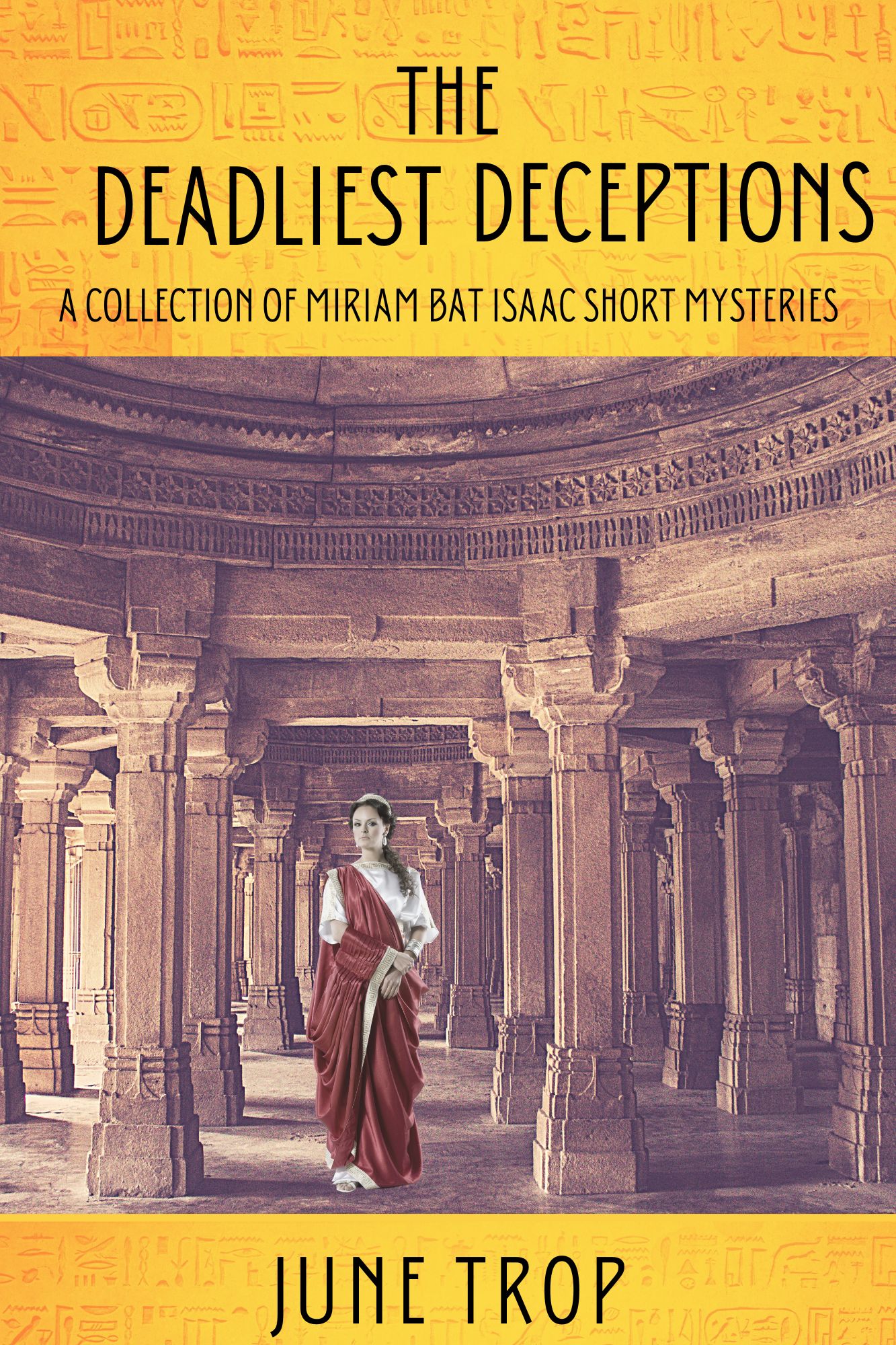I’m thrilled to have author June Trop as my guest today on Books, Birds, and Banter. I recently read June’s last collection of Miriam bat Isaac mysteries, The Deadliest Deceptions, and gave it 5 stars on Amazon.
In June’s essay today, she explains the evolution of the mystery and goes on to define the subgenres. June’s differentiation of these is one of the best I’ve ever read. I agree wholeheartedly with her that Agatha Christie’s The Murder of Roger Ackroyd was one of the best crime novels ever.
The Expansion of the Mystery Genre
by June Trop
Over the decades, the definition of mystery fiction has broadened to include any story about a crime, whether it be a cozy, noir, psychological thriller, or historical mystery. Among the earliest crime stories, such as “The Three Apples”, a tale Scheherazade narrates in the One Thousand and One Nights, no investigation is conducted. The story comes from only the men who confess to the crime.
On the other hand, the Sherlock Holmes stories, written near the end of the 19th and the beginning of the 20th century, popularized the investigation of a crime. Likewise, our early 20th-century stories, such as the cozies, emphasized plot. These mysteries were called “cozies” because any sex or violence occurred off-stage. The cozies of the 1920s and ’30s, the Golden Age of detective fiction, were written either by a British author such as Agatha Christie or someone with the British touch. Moreover, the setting was often a secluded English mansion where a closed circle of suspects assembled for the weekend. While skillfully protecting the identity of the murderer, the author reveals the villain in a surprise ending. An early favorite of mine, voted by the British Crime Writers Association as the best crime novel ever written, was Agatha Christie’s The Murder of Roger Ackroyd, first published in 1926.
Noir fiction is more about a feeling than a set of defining traits. Noir, meaning black in French, refers to stories that are essentially pessimistic. Greed, lust, alienation, and jealousy propel morally flawed characters toward their doom as they pursue a “sure thing”. The dark world of noir fiction rose in the 1940s after the Depression and World War II, when men returning from the military expressed their anxiety over reclaiming their lives. A more contemporary approach to noir, emerging in the 1970s with cynicism over the Vietnam War, moved the emphasis from white male characters toward a broader focus on gender, class, and race. Nevertheless, the themes are still timeless, based on how and why a corrupt soul goes bad.
Psychological thrillers, the crime stories that have emerged in the last decade, are often told from the viewpoint of psychologically stressed characters and incorporate elements of mystery, drama, action, and paranoia. Like many modern examples of a mystery subgenre, these stories emphasize character over plot. What makes them different, however, is that they may reveal the identity of the criminal at or near the beginning. The suspense comes not from unraveling the mystery but from whether the criminal will be caught.
The historical mystery combines historical and mystery fiction in a distinct subgenre. These works are set at least fifty years before the time of the author. Although this subgenre has existed since at least the early 20th century, Agatha Christie’s Death Comes at the End, published in 1944, was the first full-length historical mystery. Most, however, credit Ellis Peters’s Cadfael Chronicles (1977-1994) for popularizing this subgenre. In 2010, Publishers Weekly wrote of the historical mystery: “This past decade has seen an explosion in both quantity and quality. Never before have so many historical mysteries been published by so many gifted writers and covered such a wide range of times and places.”
Reading is a low-budget form of education as well as entertainment. Aside from stress reduction, reading sharpens analytic thinking. When you read a book, you have to remember an assortment of characters, their backgrounds, ambitions, and history, as well as the various arcs and sub-plots that weave their way through a story. Especially in a mystery, you need to not only take note of the details but weigh them to solve the puzzle. All the while, you are learning while being entertained.
So, if you haven’t read a historical mystery lately, let me recommend one of my Miriam bat Isaac stories. They are set in first-century CE Roman-occupied Alexandria, when the city was the cultural crossroads of the Middle East. Come stroll its splendid streets and prowl its sinister allies as you escape into that world of adventure for which we all long. My latest book, The Deadliest Deceptions, is my first collection of short historical mysteries. The nine stories range from cozy to noir to psychological thrillers. Interested? Just click here: www.JuneTrop.com/the-deadliest-deceptions.

Blurb:
Enter the world of first-century CE Roman Alexandria and participate in the perilous adventures of Miriam bat Isaac, budding alchemist and sleuth extraordinaire. Join her and her deputy Phoebe as they struggle to solve nine of their most baffling cases beginning with the locked-room murder of a sailor in which Miriam is baffled by not just who killed the sailor but how he could have died and how the killer could have entered and escaped from the room.
But be careful as you accompany them into the city’s malignant underbelly. Whether or not you can help them solve the crimes, your blood will flow faster as you escape to that world of adventure we all long for. Enjoy!
Bio:
June Trop has focused on storytelling her entire professional life. As a professor of teacher education, she aimed her research on the practical knowledge teachers construct and communicate through storytelling. Now associate professor emerita, she writes The Miriam bat Isaac Mystery Series set in first-century CE Roman Alexandria.

Author Links and Contact:
https://www.facebook.com/profile.php?id=100044318365389
Amazon Purchase Links
The Deadliest Deception Paperback
Barnes & Noble Purchase Links


Thanks for being my guest today, June. Best of luck with the fabulous The Deadliest Deceptions!
Interesting post! The Deadliest Deceptions sounds like a fun collection!
Thank you, Kathleen, for posting my brief history of mystery writing. I hope readers will check out the earlier subgenres that have shaped our genre today. And that includes the Sydney Lockhart stories set in the 1950s.
Thank you, Kathleen, for posting my blog about the recent history of mystery subgenres. One of my favorites for sheer fun, of course, is your Sydney Lockhart series set in the 1950s. Keep ’em coming!